Keep reading to learn what SEO is, how to set things up for success, and how to get indexed.
SEO Basics: Beginner’s Guide to SEO Success
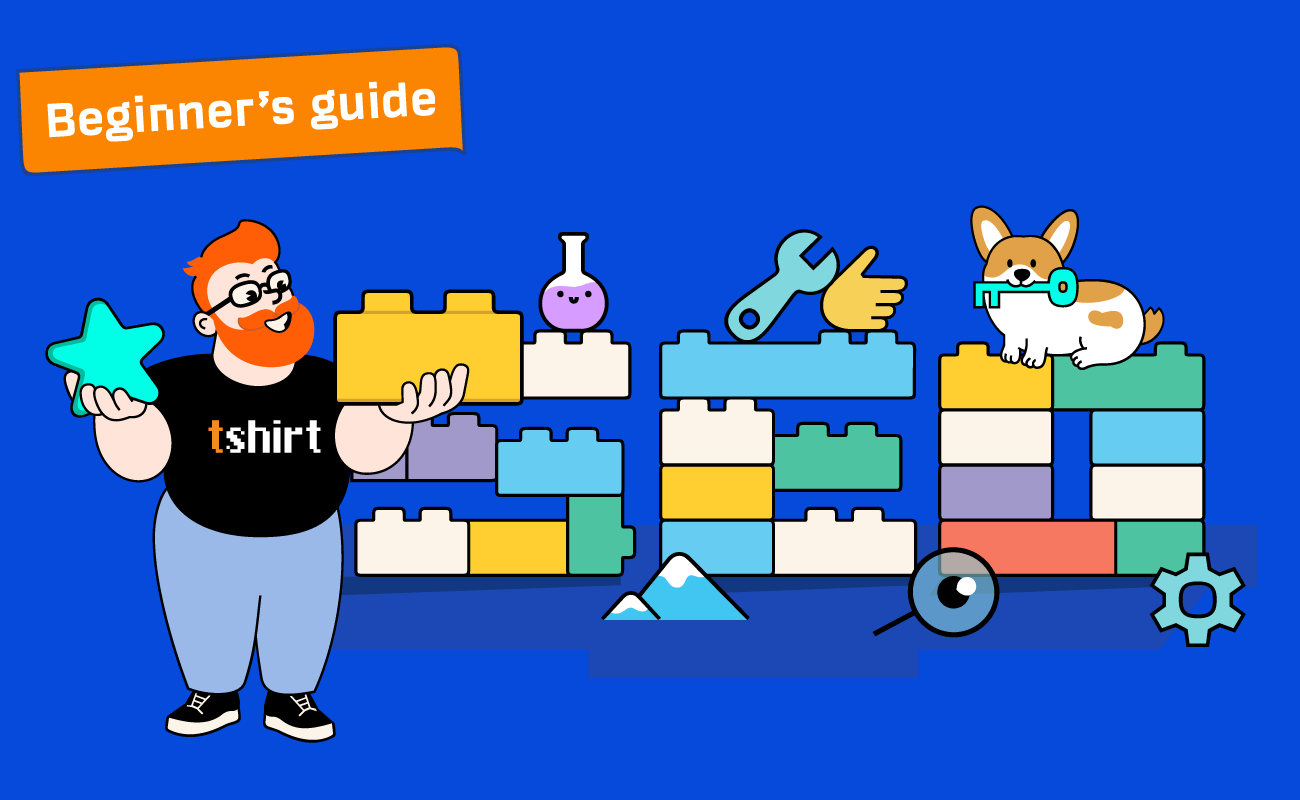
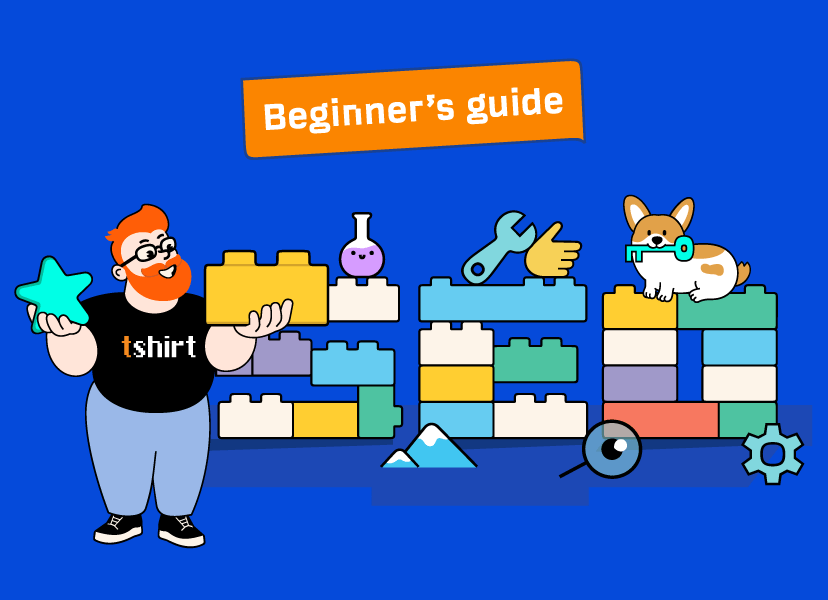

SEO fundamentals
What is SEO?
Search engine optimization (SEO) is the process of growing a website’s organic search traffic. It’s where you do things that help you show up and rank higher in a search engine’s organic results.
Why is SEO important?
People are likely searching for what you do, and you can attract customers by ranking for those terms. But you’re unlikely to rank without effort, as others are trying to do the same. This is why SEO matters. It helps show Google that you most deserve to rank.
What are the benefits of SEO?
Most people click one of the first few search results, so higher rankings usually lead to more traffic. Unlike other channels, search traffic tends to be consistent and passive. That’s because the number of searches is usually quite consistent month to month.
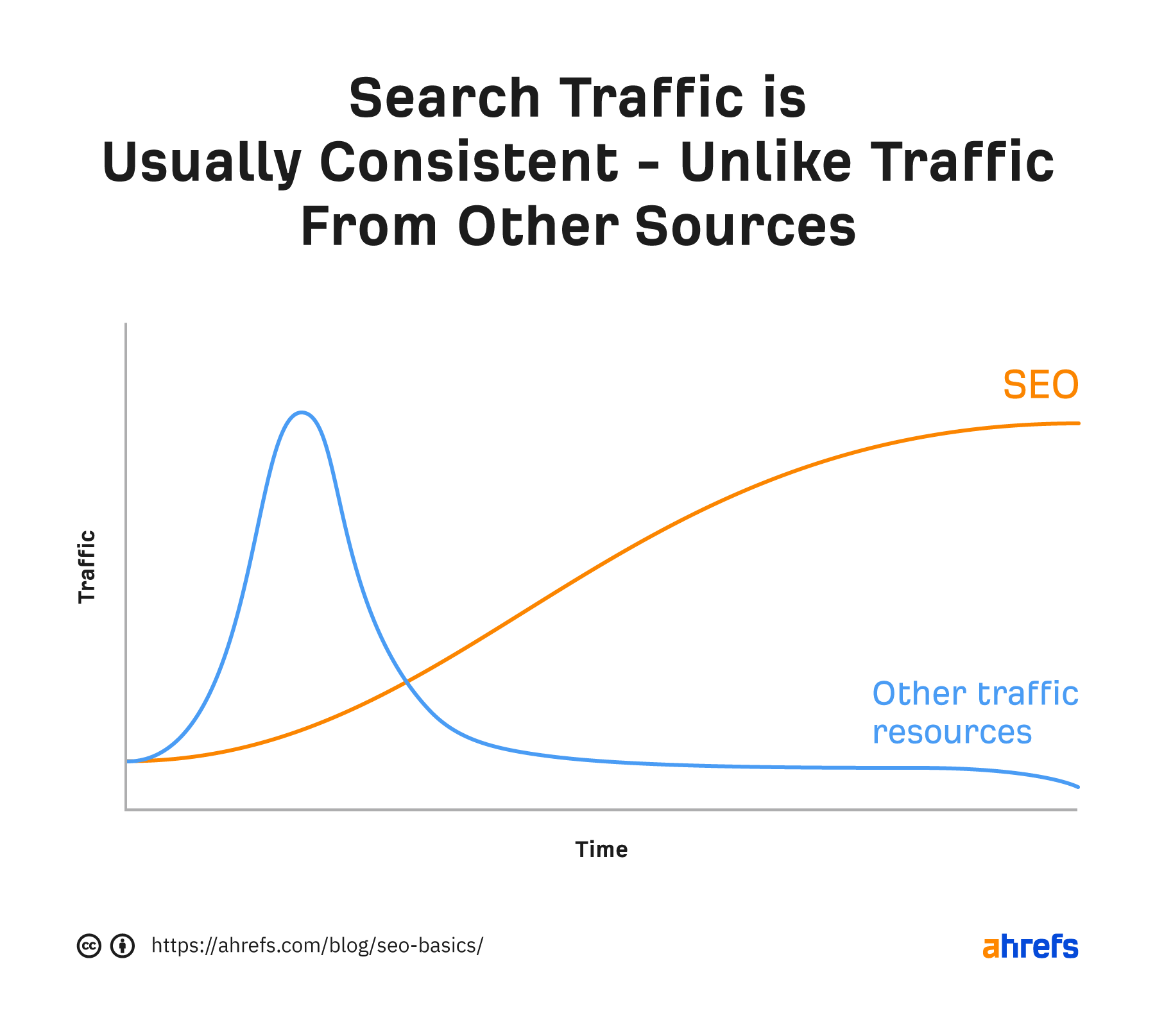
Search traffic is also “free.” That’s a big deal because ads can be expensive.
For example, we get an estimated 1.4M monthly visits from organic search. It would cost us an estimated $1.7M per month to get that same traffic from search ads.
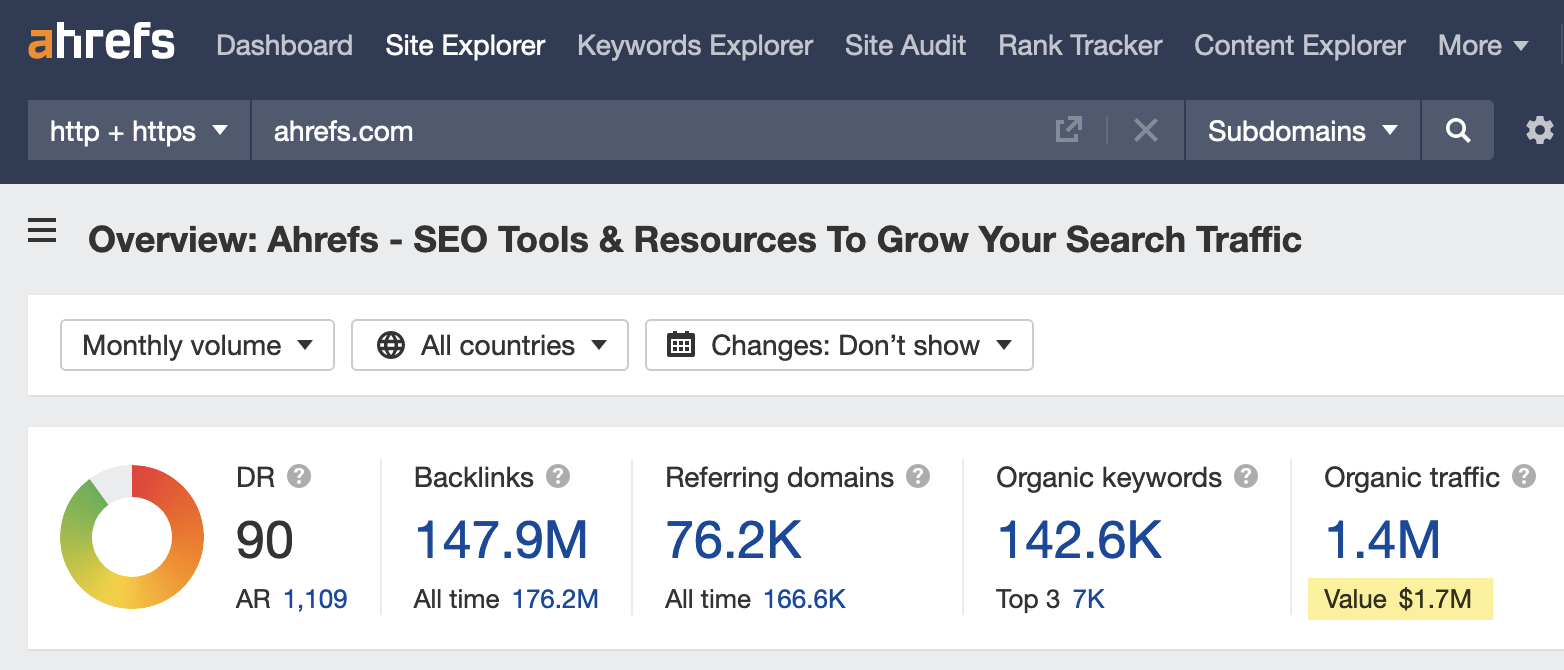
How do you do SEO?
SEO involves five main steps:
- Keyword research. Find what people search for.
- Content creation. Craft content for searchers.
- On-page SEO. Make your content as clear as possible.
- Link building. Build trust and authority from other websites.
- Technical SEO. Help search engines find, crawl, and index your content efficiently.
These steps are the main focus of our beginner’s guide to SEO.

Setting up for SEO success
Doing SEO is much easier when your website is properly set up for SEO success. Let’s look at a few ways to do that.
Get a good domain
Most domains are fine for SEO, so don’t panic if you already have one. But if you’re still shopping around, keep these two elements of a good domain in mind.
Domain name
Something short and memorable is best here. Don’t try to shoehorn keywords. Your business name without hyphens or special characters is usually a good bet.
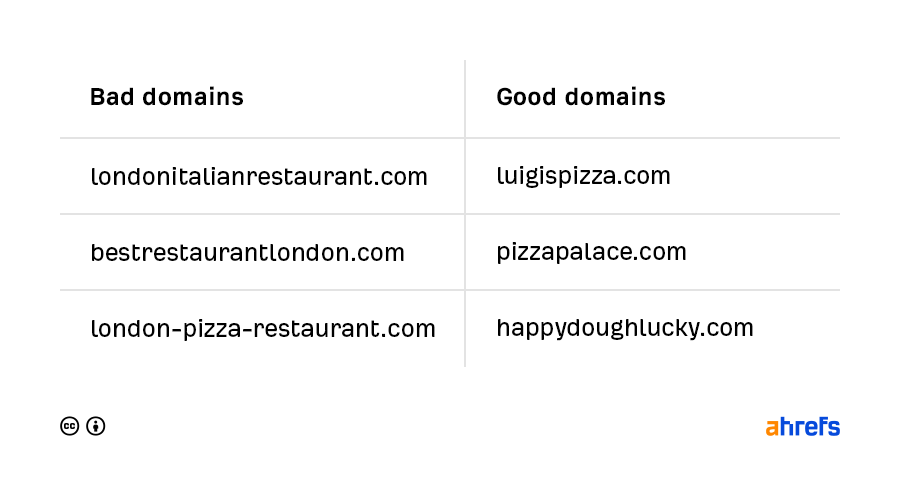
Top-level domain (TLD)
This is the part after the name, like .com. Your choice of TLD makes no difference for SEO. [1] But we think .com is best for most people, as it’s the most recognizable and trusted. For charities, .org or your local equivalent also works. If you only do business in one country outside the U.S., your country code top-level domain (ccTLD), like .co.uk, is fine too.
It’s best to stay clear of TLDs like .info and .biz that people tend to associate with spam. But it’s not the end of the world if you have one. You can still build a legit website that ranks.
Use a website platform
Website platforms let you create and manage a website with ease. There are two types:
- Hosted platforms. Everything’s done for you. They host the site, give you ready-made designs, and let you add and edit content without touching code.
- Self-hosted platforms. These also let you add and edit content without code. The difference is that you have to host and install them yourself.
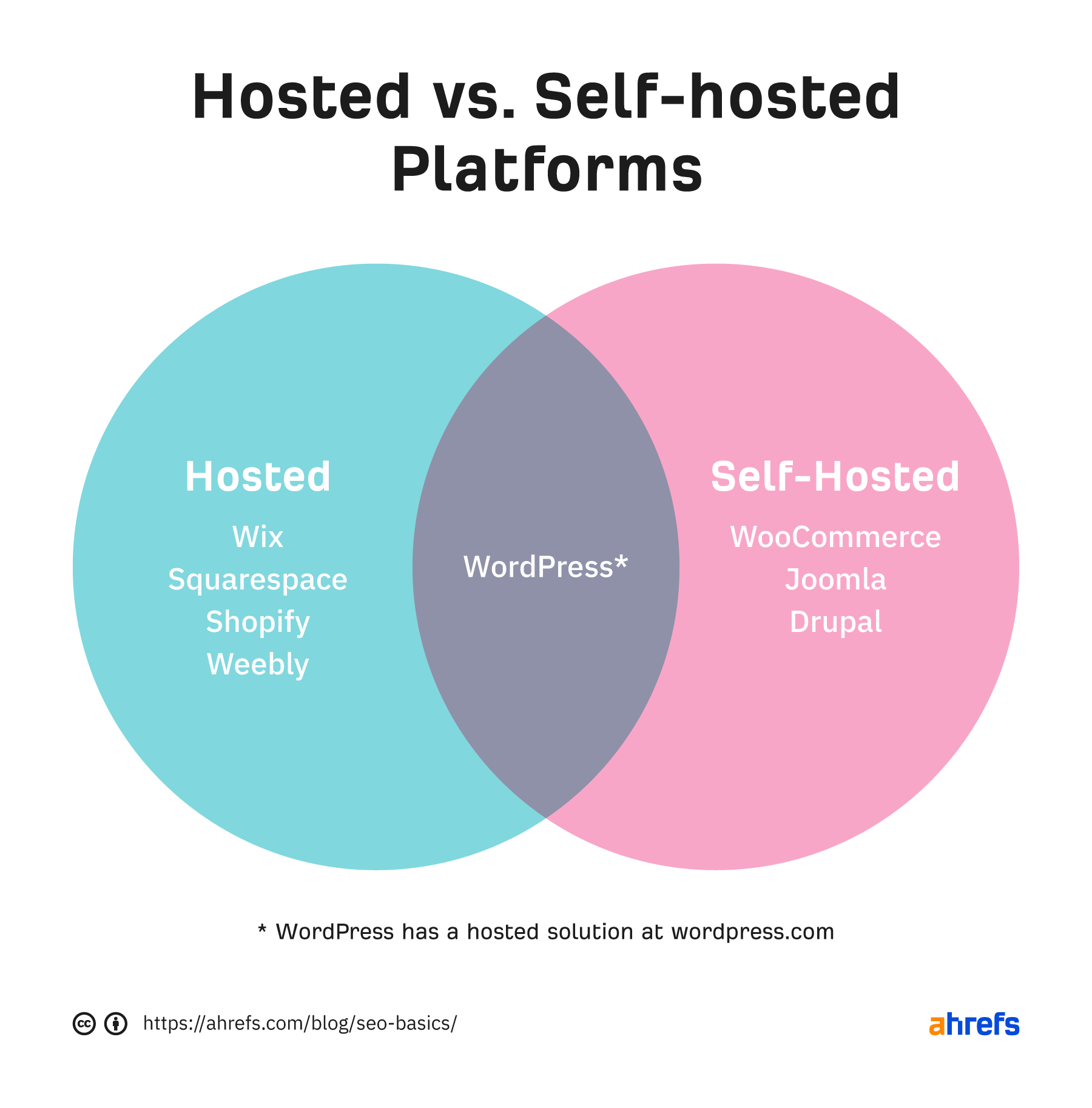
Most SEOs recommend a self-hosted, open-source platform like WordPress because:
- It’s customizable. You can edit the open-source code how you like. There’s also a vast community of developers who know the platform inside out.
- It’s extensible. There are millions of plugins for extending its functionality, including many SEO plugins.
That said, if you value ease of use and support, a hosted solution might be a better fit. All the big ones provide enough SEO capabilities for most people.
Use a good web host
If you’re using a hosted solution, you’ll need a web host. These store your site on a hard drive that anyone with an internet connection can access. Consider the three S’s when choosing one:
- Security. Make sure you get a free SSL/TLS certificate. Or, at the very least, support for Let’s Encrypt—a nonprofit supplying free certificates.
- Server location. It takes time for data to travel between the server and visitor. So it’s best to choose a host with servers in the same country as most of your traffic.
- Support. 24/7 support is ideal. Test how good their support is by asking the above before you sign up.
You can optimize server location with a content distribution network (CDN). This creates copies of your site on servers around the world so it’s always served from close to the user. So don’t fret about this too much. If you find that speed is an issue, you can invest in a CDN later on.
Create a positive user experience
Google wants to rank pages that give visitors a positive experience. [2] Let’s look at a few ways to do this.
Use HTTPS
Nothing is worse for visitors than their personal data being susceptible to hackers. Always encrypt your site with SSL/TLS.
Choose an appealing design
Nobody wants to visit a website that looks like it’s from the ’90s. So while there’s no need to redesign your website every few months, it should look good and reflect your brand.
Make sure it’s mobile-friendly
More searches are now done on mobile than desktop. [3] So it’s critical that your website is as pleasant to use on mobile as on desktop.
Use a readable font size
People browse the web using all kinds of devices. Make sure your content is readable across the board.
Avoid intrusive pop-ups and ads
Everyone hates ads, but sometimes you need them. If that’s the case, avoid intrusive interstitials. Pages with these may not rank as highly. [4]
Make sure it loads fast
Page speed is a ranking factor on desktop and mobile. But this doesn’t mean your site needs to load lightning fast. It only affects pages that deliver the slowest experience to users. [5][6]
Create a logical site structure
It should be easy for visitors and search engines to find content on your site. That’s why it’s important to create a logical hierarchy for your content. You can do this by sketching a mind map.
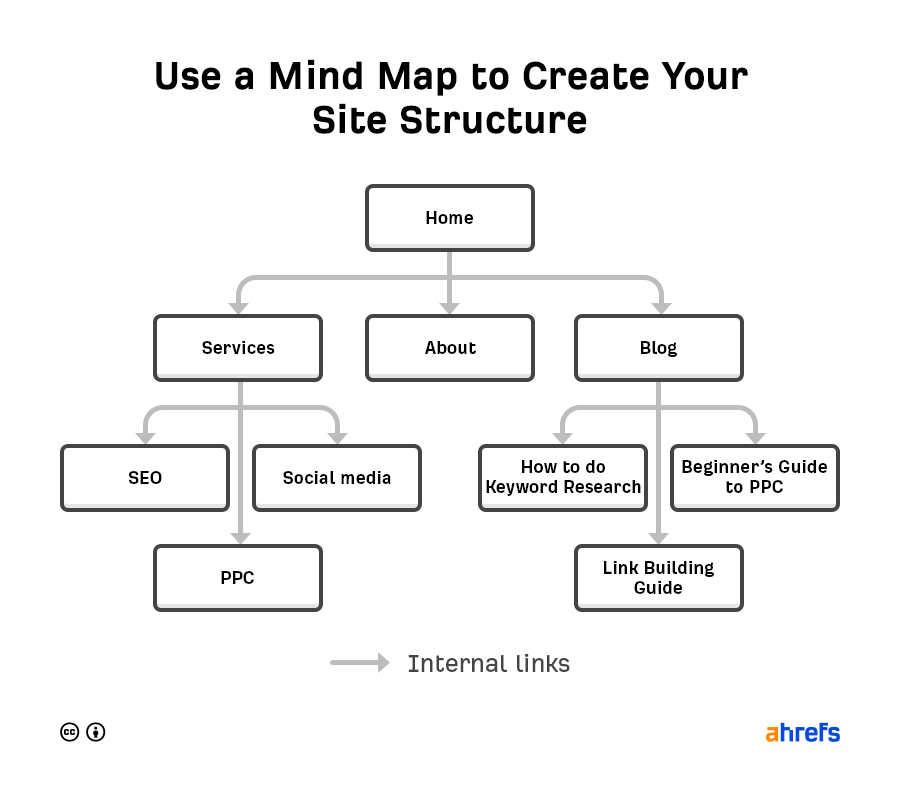
Each branch on the map becomes an internal link, which is a link from one page on a website to another.
Internal links are crucial for UX and SEO for a few reasons:
- They help search engines find new pages. Google can’t index pages it can’t find.
- They help pass PageRank around your site. PageRank is the foundation of Google search. It judges the quality of a page by analyzing the quantity and quality of links that point to it. It’s still used by Google today. [7]
- They help search engines understand what your page is about. Google looks at the clickable words in the link for this, otherwise known as anchor text. [8]
Use a logical URL structure
URLs are important, as they help searchers understand the content and context of a page. Many website platforms let you choose how to structure your URLs. These are the five main options for URLs in WordPress:
- Plain: website.com/?p=123
- Day and name: website.com/2021/03/04/seo-basics/
- Month and name: website.com/03/04/seo-basics/
- Numeric: website.com/865/
- Post name: website.com/seo-basics/
If you’re setting up a new site, go with the clearest and most descriptive structure. That’s post name. If you’re working with an existing website, it’s rarely a good idea to change the URL structure; it may break things.
Install an SEO plugin
Most website platforms handle basic SEO functionality out of the box. But if you’re using WordPress, install an SEO plugin. It’s hard to put even basic SEO best practices in place without one. Both Yoast and Rank Math are good options.

Getting on Google
Having a website set up for SEO success will help Google crawl and index your pages. But submitting your site to Google can speed up this process further. That’s because this helps Google find your website even if it has no backlinks.
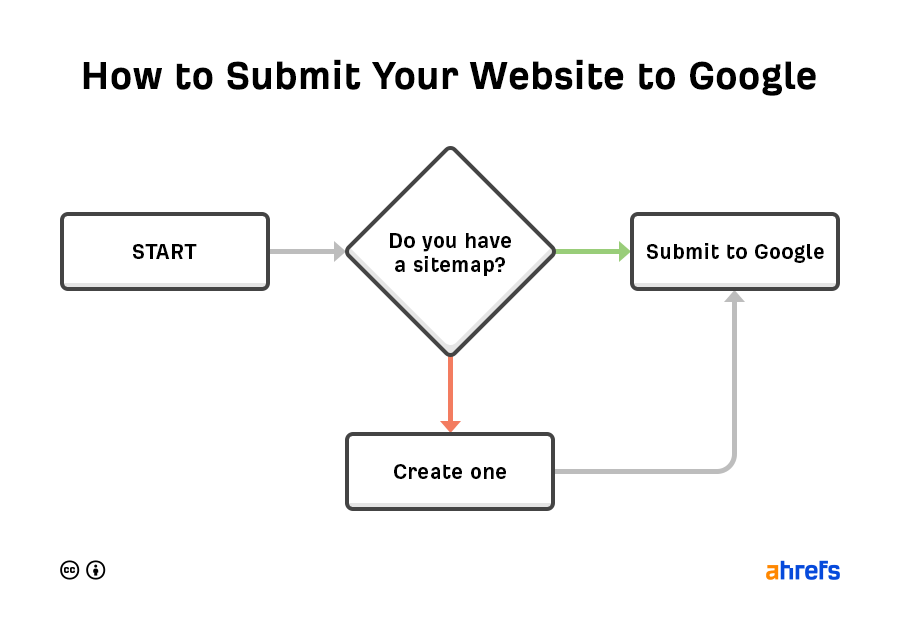
Finding or creating a sitemap
Sitemaps list the important pages on your website that you want search engines to index. If you already have a sitemap, it’ll likely be at one of these URLs:
- site.com/sitemap.xml
- site.com/sitemap_index.xml
If you can’t find it there, check site.com/robots.txt where it’s usually listed.

If you still can’t find it, you likely don’t have one and need to create one.
Submitting your sitemap
You do this via Google Search Console (GSC). It takes about two seconds.


How to track SEO success
Before we dive into how to do SEO, it’s worth taking a minute to understand how to track and measure SEO performance. This is never easy, and what we’ll cover here is a very high-level overview.
Organic traffic
Let’s start with the obvious one. If organic traffic is going up, you’re doing something right. You can track this in GSC for free. If you don’t have access to GSC, sign up for a free Ahrefs Webmaster Tools (AWT) account. Then plug your domain into Site Explorer for an estimate.
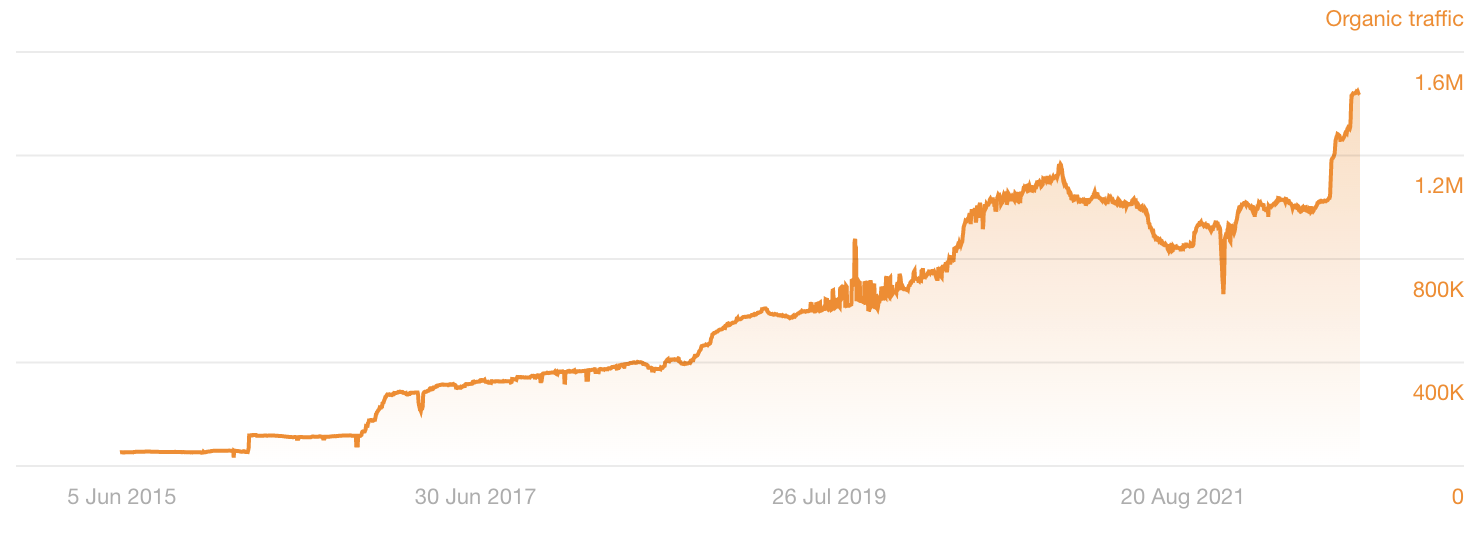
Keyword rankings
If rankings are on the rise for your target keywords, that’s another sign that you’re doing something right. You can track average keyword rankings for free in GSC. If you want more accurate tracking, you’ll need a rank tracking tool like Ahrefs’ Rank Tracker.

Organic traffic and keyword rankings are “vanity metrics.” There’s no harm in keeping an eye on them, but they often bear no relationship with marketing or business goals. It’s much better to track metrics that have actual business impact. We cover two of these below.
Visibility
This metric in Ahrefs’ Rank Tracker shows what percentage of all clicks for the tracked keywords land on your website.
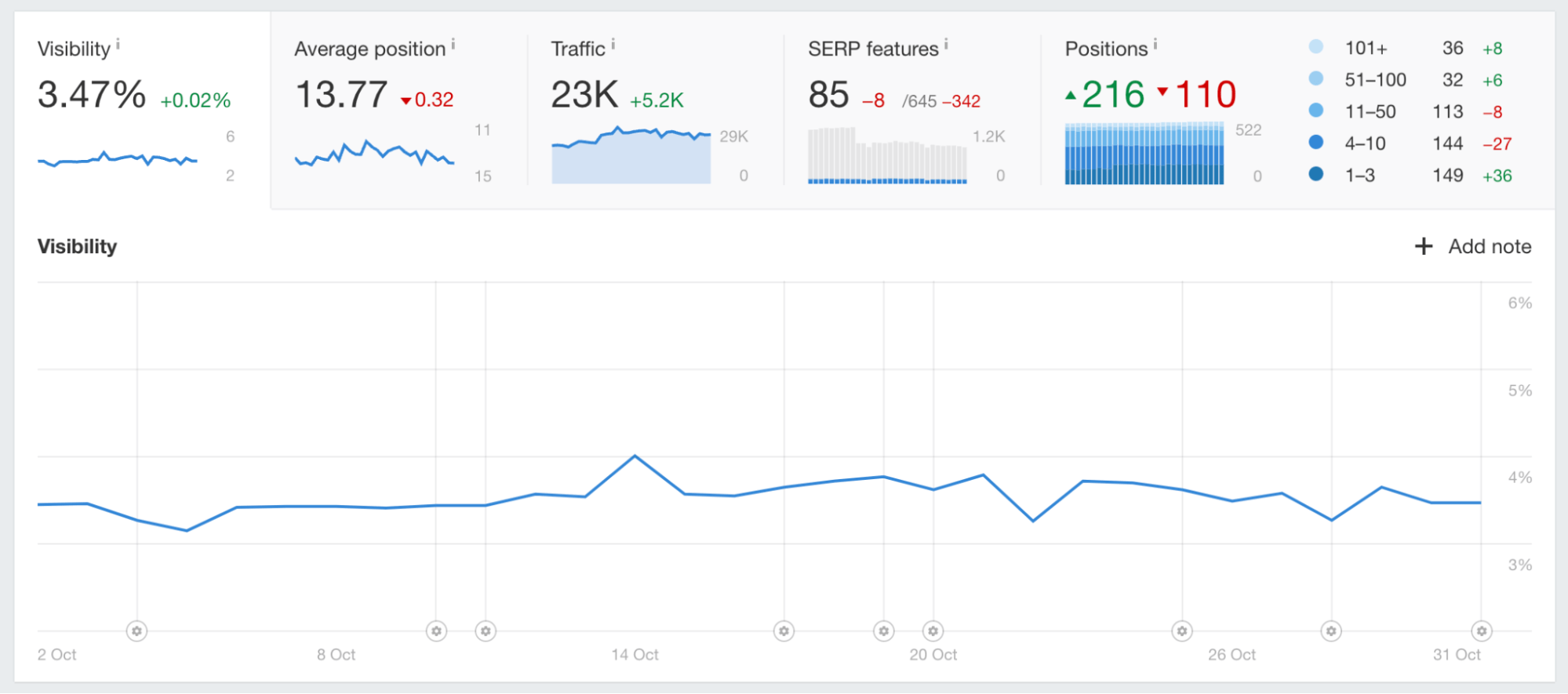
For example, let’s say you track one keyword, and all the top positions in Google are occupied by pages on your website. Because your website gets all possible traffic from that keyword, your Visibility is 100%.
Now let’s say your website only occupies one spot in Google, with the rest occupied by competitors. Because some clicks go to other websites, your Visibility is lower than 100%.
If your Visibility is increasing, this is yet another good sign your SEO is on the right track.
Key takeaways
- SEO is the process of growing a website’s organic search traffic.
- You do this by ranking in organic search results.
- SEO is important because you’re unlikely to rank well without it.
- Ranking high gets you free, passive, and consistent traffic month after month.
- SEO involves keyword research, content creation, on-page SEO, link building, and technical SEO.
- Doing SEO is much easier when your website is properly set up for SEO success.
- Google will usually find and index your website on its own, but you can sometimes speed the process up by submitting your sitemap.
References
- “SEO Benefits of New Top Level Domains (nTLDs)?”. Search Engine Journal. 5th December 2020. Retrieved 17th August 2022
- “Search Engine Optimization (SEO) Starter Guide”. Google. Retrieved 17th August 2022
- “How Mobile Search Connects Consumers to Stores”. Google. May 24th 2016. Retrieved 17th August 2022
- “Helping users easily access content on mobile”. Google. August 23rd 2016. Retrieved 17th August 2022
- “Using site speed in web search ranking”. Google. Retrieved 16th August 2022
- “Using page speed in mobile search ranking”. Google. Retrieved 16th August 2022
- “Search Through Time”. Google. Retrieved 17th August 2022
- “Importance of link architecture”. Google. October 7th 2008. Retrieved 17th August 2022
Copy link


